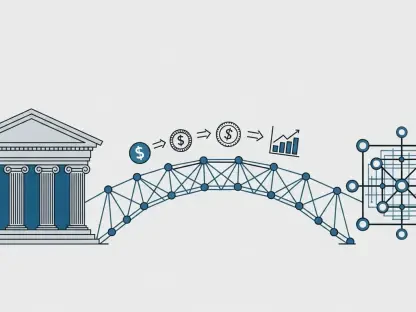In a move that has caught the attention of investors and market analysts alike, Bexil Investment Trust (OTC PINK: BXSY) announced a quarterly distribution of $0.25 per share, payable on March 27, 2025, to shareholders of record as of March 17, 2025, with an ex-dividend date of March 17, 2025. This announcement has been significant not just because of the payout itself but also due to the implications for understanding the Fund’s investment strategy, performance, and compliance with U.S. tax regulations. The initial estimates for this distribution come amid a climate of increasing scrutiny on investment practices and fiscal responsibility.
Breakdown of Distribution Composition
Estimates and Reporting
The Fund’s March 3, 2025, distribution is initially estimated to consist entirely of capital gains, representing about 100% of the total sum, with no portion attributed to net investment income or return of capital. This preliminary breakdown is critical for shareholders as they plan for year-end tax obligations, though it comes with an important caveat: these figures are estimates and are not final for tax reporting purposes. The definitive amount and nature of distributable income can only be accurately determined at the fiscal year’s conclusion when the actual financial data are available.
Understanding the nature of the distribution is essential because it influences the tax treatment of the payout. For instance, capital gains are typically taxed at a different rate than ordinary income, impacting shareholders’ tax liabilities. Bexil Investment Trust must provide Form 1099-DIV to its shareholders after the fiscal year ends, detailing the final tax treatment of the distribution. This ensures compliance with the Investment Company Act of 1940 and provides the necessary documentation for federal income tax reporting.
Potential Changes and Tax Implications
It is worth noting that while these estimates serve as a guideline, they could change based on the Fund’s year-end financial outcomes. This potential variability emphasizes the need for shareholders to be informed and avoid making premature assumptions about the Fund’s investment performance based solely on these distributions. The return of capital, an often misunderstood element, occurs when the Fund returns the money initially invested by shareholders rather than profits earned. This has the effect of reducing the shareholders’ tax basis in their Fund shares, which could result in capital gains or reduced losses upon the sale of the shares in the future.
Being aware of these implications is decisive for making informed investment choices. Shareholders must understand that a return of capital is not indicative of the Fund’s operational success or profitability. Instead, it represents a portion of the original investment being handed back, which requires careful long-term tax planning. The actual source and character of the distribution will be more accurately reflected in the final documents provided post-fiscal year-end, thereby giving shareholders a clearer financial picture.
Strategy and Policy Insights
Distribution Policy and Shareholder Impact
The Fund’s distribution policy aims to provide shareholders with stable cash flow, a feature often appreciated in volatile market conditions. However, it is crucial to note that there are no guarantees that this policy will have a positive effect on the Fund’s market price relative to its net asset value (NAV) per share. Market dynamics can influence share prices independently of any distribution policy, making it essential for investors to maintain a balanced perspective on their portfolios. Consequently, the trustees of the Fund are not required to take corrective measures to address any price discount that may arise in the market.
The fluidity of the policy is another significant consideration. The trustees have the authority to change, suspend, or terminate the distribution policy at any time without prior notice to the shareholders. This inherent flexibility is designed to allow the Fund to adapt to changing market conditions and operational needs. Nonetheless, it also means that shareholders should stay informed about potential changes and understand the reasons behind such decisions when they occur.
Long-Term Investment Considerations
Bexil Investment Trust (OTC PINK: BXSY) has made a notable announcement that has caught the eye of investors and market analysts. The Trust declared a quarterly distribution of $0.25 per share, to be paid on March 27, 2025. This payout applies to shareholders of record as of March 17, 2025, making that the ex-dividend date. This announcement isn’t just important due to the dividend itself; it also sheds light on the Fund’s investment strategy, performance, and adherence to U.S. tax regulations. The timing of this initial distribution estimate is significant, coming as it does in a period when there’s growing scrutiny on investment practices and financial responsibility. This move prompts further analysis of the Fund’s future direction and market sentiment, offering deeper insights into its fiscal policy and strategic approach. Investors and analysts will keenly watch how Bexil Investment Trust navigates this landscape, as this dividend declaration sends ripples through the market, indicating its commitment to shareholder value and regulatory compliance.









